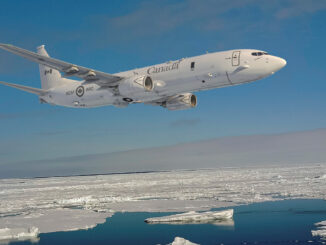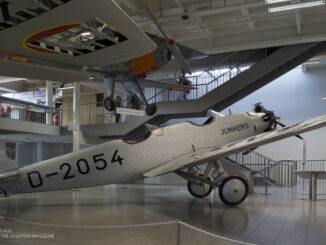 Gondola of Piccard/Kipfer balloon, used during their record flight dated 27th May 1931, exhibited at the Royal Museum of the Armed Forces and Military History in Brussels, September 2023.
Gondola of Piccard/Kipfer balloon, used during their record flight dated 27th May 1931, exhibited at the Royal Museum of the Armed Forces and Military History in Brussels, September 2023.
Auguste Antoine Piccard was a Swiss physicist that became world-known for his studies on pressure and temperature phenomena, including exploration of the ocean´s depths and the stratosphere.
In 1922, Piccard became a professor of physics at Université libre de Bruxelles (Free university of Brussels), a French-speaking research university in Belgium. There, he developed an interest in research of the upper atmosphere and measurement of cosmic radiation. Shortly after, it led Piccard to ballooning and theoretical studies on development of pressurized gondola to allow him ascent to the stratosphere without a need of pressure suit.
In 1926, Piccard, inspired by Albert Einstein himself, ascended in a balloon to 15,000 feet and performed a set of experiments related to the speed of light. However, he was not satisfied with the result. His research needed much higher altitude to measure the cosmic rays before they collide with anything.
Piccard´s works were noticed by Fonds National de la Recherche Scientifique (National Fund for Scientific Research) of Belgium. Financial support he received from the fund, allowed Piccard to construct the aforementioned gondola and then perform the first research flights.
The Piccard´s gondola was a pressurized aluminium sphere – just about 20 centimetres thick and with a diameter of approximately two metres. It provided just enough space for Piccard and his co-pilot, fellow physicist Paul Kipfer. It was attached to a huge, yellow-painted balloon.
Piccard and Kipfer chosen Augsburg in Germany as their starting point. It caused a funny situation as the local authorities required the crew to wear helmets for safety reasons. Regrettably, the Swiss scientists had no such equipment, thus, to avoid the flight to be cancelled last minute, they quickly adapted two ordinary wicker baskets and put them on their heads. That moment was captured on an iconic photography, showing Piccard and Kipfer standing by their gondola and wearing fancy baskets on their heads.
Fortunately, the German authorities accepted that safety equipment and the balloon was allowed to ascend. The flight began in the early morning, on 27th May 1931.
Initially, Piccard and Kipfer intended to stay in the air for about four hours. However, during the flight – when they wanted to decrease the ascending speed – the Swiss physicists noticed the release valve was frozen in ´shut´ position.
Time was passing by and the scientists had no way to return to Earth. Moreover, the gondola began to heat up and an engine attached to it finally failed. Piccard and Kipfer were hopelessly floating in the stratosphere over Germany, Austria and Italy, with their oxygen running out.
As if that was not enough, the crew was soon alarmed by a leak in the gondola shell. Fortunately, Piccard managed to seal it with a cloth soaked with Vaseline, but it was only a short-time relief. Soon, their barometer broke, and liquid mercury began to corrode through aluminium the gondola was made of.
Finally, in the end of the day the salvation came. With the sun setting down, the balloon began to descend and finally crash landed in the Gurgl glacier area in the Austrian Alps, at 1,950 metres above the sea level. Instead of four, the flight lasted an incredible seventeen hours. Therefore, the Swiss scientists were already considered dead yet during the flight. Nevertheless, they survived against all odds and triumphed in the end.
The flight of Piccard and Kipfer was described with details in an article published in Popular Science magazine. ´The story of their adventure surpasses fiction´, the article concluded.
During their incredible journey, Auguste Piccard and Paul Kipfer reached the record altitude of 15,781 m (51,775 ft) and became the first humans to enter the stratosphere. Their achievement was recognized by Fédération Aéronautique Internationale (World Air Sports Federation) and registered under the Record File Number 10634. In addition, the Swiss researchers performed a series of important experiments on the cosmic rays during the flight and were the first people to observe the curvature of the Earth.
Auguste Piccard continued with his research of the stratosphere. In August of 1932, he performed another balloon flight and broke his previous altitude record, ascending to 16,764 m (55,000 ft).
In later years, Piccard began to study the ocean´s depth. He invented the first bathyscaphe designated FNRS-2 and then used it for a number of unmanned dives performed in the late 1940s. The bathyscaphe was then transferred to the French Navy and in 1954 used for a manned descend to 4,176 m (13,701 ft).
Auguste Piccard died on 24th March 1962, aged 78.
Life and scientific research made by Auguste Piccard, his twin brother Jean Felix Piccard (chemist, engineer, professor and also high-altitude balloonist) and his son Jacques Piccard (oceanographer and engineer) led Gene Roddenberry to name after them one of the main characters of his Star Trek series, Captain Jean-Luc Picard.
Auguste Piccard was also an inspiration for Hergé, the Belgian cartoonist and creator of the famous Tintin comics books. In that series, Piccard was portrayed as Professor Calculus.



